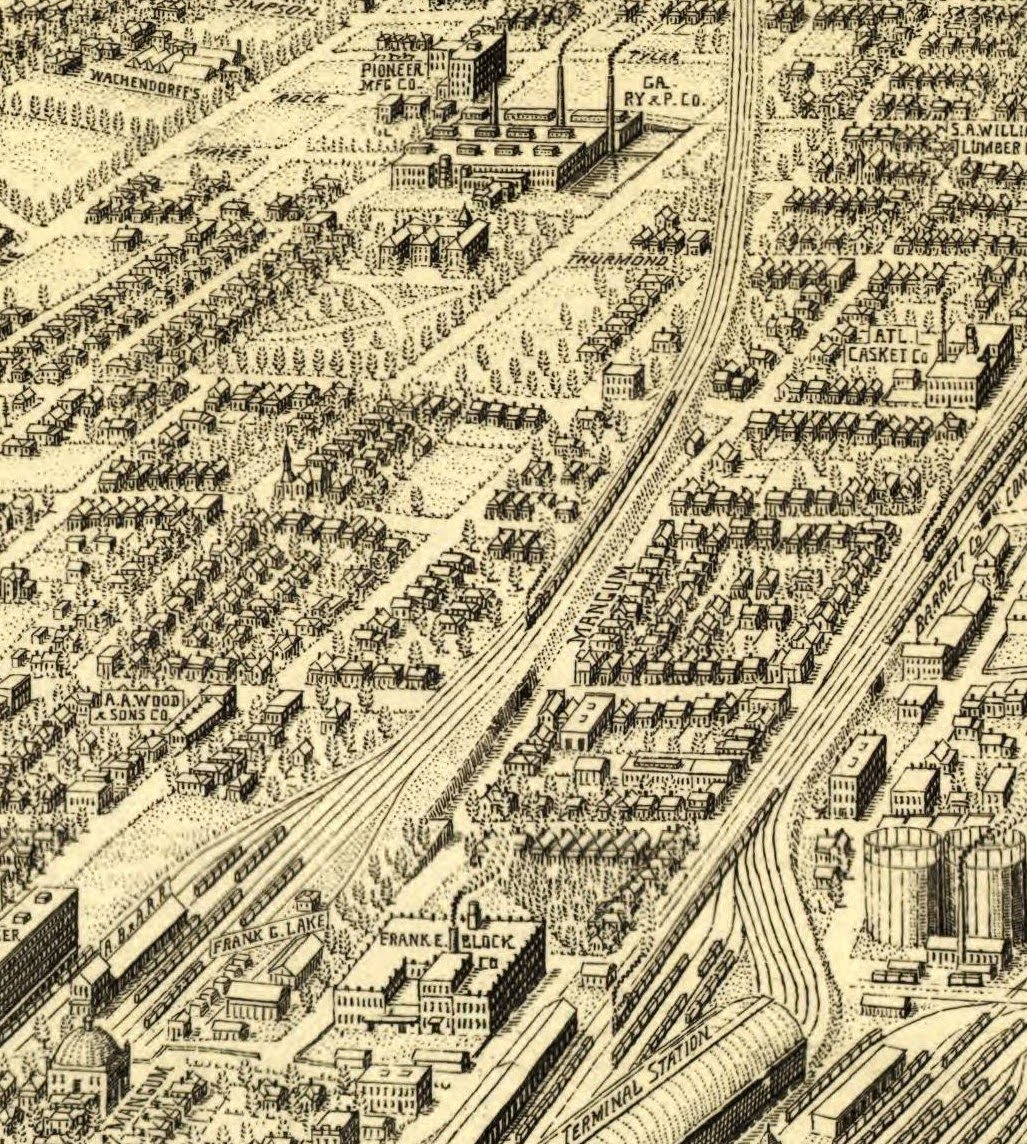One of the inspirations for driving around Atlanta and photographing 19th century industrial buildings was found at the Brookhaven library way back in 1987, a fantastic book with the unglamorous title "Atlanta Historic Resources Workbook". Published by the Atlanta Urban Design Commission in September 1981, the book painstakingly details the history and significance of hundreds of structures and historic districts around town, everything from the Fox Theatre and the Flatiron Building to houses and old bottling plants. I managed to find a well worn ex-library copy on Alibris a few years ago. It's a fascinating time capsule and profiles many historic structures that have since been demolished.
One of the more obscure entries in the book was this nondescript freight depot in the Castleberry Hill area.
The old depot is the white brick building on the left of this photo I took from a parking lot off of Spring Street on January 10, 1990. A fire destroyed the structure in 1992.
Something I never anticipated when to returning to sites I had photographed two decades earlier is the astonishing proliferation of chain link fences. There are now fences on bridges, fences underneath bridges, fences blocking access to bridges, fences around parking lots, fences around vacant lots, fences along the railroad, fences around buildings, fences across driveways, fences across roads. Fences, fences everywhere! One such fence kept me from recreating the same perspective of the above photo, but this is pretty close. January 5, 2012.
A much better view of the old depot can be found on this 1989 postcard of the former Atlanta & West Point engine 290. Locomotive #290 was built in 1926 for the Atlanta & West Point and operated with the New Georgia Railroad during the late 1980s and early '90s. It also appeared in the movie Fried Green Tomatoes (...not to mention Decompositions) Anyway, #290 is now on display at the Southeastern Railway Museum in Duluth, GA.
Date of top photo: September 12, 1989
Bottom photo: January 5, 2012

An interesting comparison of bird's eye views from 1892, 1919, and 2010. What is striking about the first view is how self contained this area appeared to be in 1892. Before the advent of the automobile, houses, businesses, and industries were, by necessity, within walking distance of each other. The railroad depot was the focal point of the neighborhood. In the modern view, those relationships are completely lost.

















































